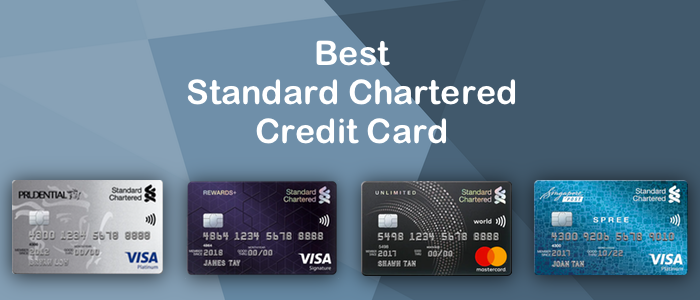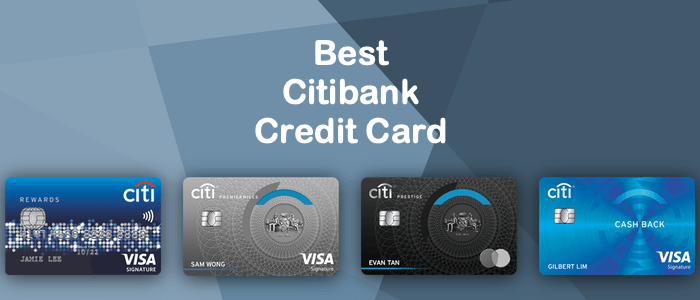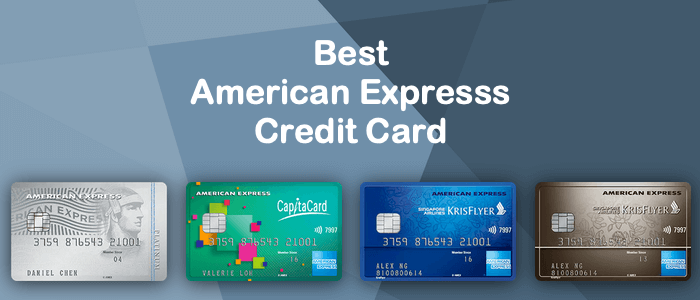Premium Credit Card Rewards
Enjoy Compare’s Greg Fortune takes a look at why you should trade up your basic credit card to a premium model, and explores what’s out there for people who want to save money and earn exciting rewards.
We recently found out that up to ninety per cent of Singaporeans still use the first credit card they applied for. This astonishing figure shows an incredible brand loyalty that’s pretty typical in the world of banking, where customers are usually pretty loathe to change something that’s worked well for them year upon year.
I’ll be the first to admit that I’m one of these people. I’ve still got the same bank account that my mother opened for me in the mid-1980s as a young college student in England (although I’ve upgraded the account offering on several occasions as my earning power has increased over the years); and – until very recently – I still had the same Visa credit card in my wallet that I applied for the minute I got a low-paying public sector job. If you guessed it was from the same bank, you are absolutely correct.
But that’s how banking and money management works for millions of people the world over. There’s a strange sort of brand loyalty out there, that no matter how awful your bank is, no matter how many bizarre and (possibly) made up charges they hit you with, how dreadfully they treat you, you still stick with the same brand. Year in, year out.
But here’s the good news: You are actually allowed to change, and that includes your credit card. I’ve done it, and I’m now getting a much better deal than I was before and – here’s the kicker – actually turning a profit on the deal. And you can do it too.
So, why should I change my credit card?
If you’re one on the ninety per cent who still has their first and only credit card, one thing has probably happened since it first landed fresh and new in your wallet or purse – your earning power has increased.
Mine certainly did – I got my first credit card when I got my first job as a lowly clerk in the civil service. The credit limit was around 500 dollars and the interest rate was something which we’d now get outraged over, but it was mine.
Since those days, my earning power had increased fifteen-fold, and by never missing a payment on any loan, credit card or other finance, my credit rating has remained in tip-top condition. That means banks have offered me higher spending limits and lower interest rates down the years, meaning that as I got (relatively) better off, I became less of a risk to financial institutions. Their trust in me meant they were more prepared to go out on a limb to keep me as a customer.
Now I’ve got several credit cards, and I’ll tell you why.
To the casual observer, having several credit cards will set the alarm bells ringing.
“Why”, they ask, “Do you need all that DEBT?”
The answer to this is simple: I’m not interested in running up a huge debt or spending the spectacular credit limits that the banks insist on offering me. Like any good credit card owner, I never spend more on my cards than I can afford to pay back. And with payday come and gone, I can tell you with confidence that the balances on my three existing credit cards stand at exactly zero Singapore dollars and zero cents.
So why hold three different credit cards? It’s simple…
What kind of premium credit cards are there?
Singaporeans can count themselves lucky that we have one of the most competitive consumer banking sectors in the world. If you don’t believe me, try getting similar credit with brilliant fringe benefits elsewhere in the world – you’ll be struggling to equal what’s on offer here on our island. Some people might complain that MAS over-regulates in how our banks operate, but the exact opposite is true – they’ve acted as guardians to our consumers, resulting in a competitive market that suits banking customers.
In terms of credit cards for what might be described as ‘premium’ customers – those of us who have professional careers with incomes that leave us with cash in the bank at the end of the month – it means that battle is being waged between our major banks to attract and keep this sort of money. The premium credit card is massive business in Singapore, and that’s good news for you.
They fall into three main sectors:
• Lifestyle and shopping
• Driving
• Travel
… and we’ll explain the difference to you.
Our banks realised that different people have different spending habits. While you may be – let’s say – an executive in the insurance industry, you might never leave Singapore from one year to the next, but you drive a car every day. There’s a card for that. Or you might find yourself flying all over the Asia-Pacific region tying up deals and working with international colleagues. There’s a card for that. Or, you take public transport everywhere, and spend all your disposable income on fine dining and night clubs. There’s a card for that, too.
Or, you might be a bit of all three.
That’s why I’ve got three cards, although nightclubs are out at my age.
The trick of holding multiple cards, of course, is careful management to make sure you get the best deals from all of them.
What about annual fees?
Most premium credit cards come at a price.
While not everybody even qualifies for one due to the earning power and credit rating required to meet the banks’ thresholds, some prospective new customers are put off by the annual fees demanded for their new card.
This has always been a puzzle to me – if you’re earning enough money to qualify for some of the best credit card deals on the planet, why are you baulking at something that boils down to (at the very most) 20 dollars per month?
If you’re drawn to a top credit card just for the sake of the fact that it looks gold and shiny in your wallet and impresses people whenever to pull it out to pay for a meal in a top restaurant, then – my friend – you are doing it for all the wrong reasons. The reason you have a gold credit card is because it actually makes your life cheaper and therefore makes you even better off.
Don’t believe me? Let’s take a look at the cost vs benefits for one of Singapore’s top premium credit cards for travellers. We won’t name it here, because offers change all the time, but you’ll get the idea. Let’s just call it the Mega Corp Deluxe Travel Platinum Card and be done with it.
For your 250 dollar annual fee, Mega Corp’s credit card division will throw in the following offers for no extra charge:
• Enough travel loyalty points for an economy flight from Singapore to London
• Another bundle of loyalty points the first time you use your card
• Extra points if you use your card a certain number of times each month
• Free travel insurance worth up to 1m dollars
• Free nights in top global-brand hotels
• Free executive luggage set
• VIP airport lounge access
Those stack up to a very decent bunch of deals, and they’re available if you’re over 21 years of age and earning more than 50,000 dollars annually with a sufficiently good credit rating.
And here’s the one thing you need to know: These deals are a useless waste of your annual fee if you don’t use them. What’s the point of applying for – and paying for – a premium travel credit card if you’re never going to set foot outside Singapore that year? The savvy traveller will use every last benefit on their card, and if they use it often enough and keep the end-of-month balance at zero, then it will have paid for itself in a matter of months.
So the take-home lesson here is: Only apply for a credit card with a fee if you think you can earn that fee back and make the card work for you in the first year.
What kind of premium deals should I look for?
We’ve already looked at the sort of premium deals you could expect from a travel credit card: loyalty points or air miles; free insurance; bonuses; travel and dining discounts.
But what should you look out for in the other types of premium credit cards?
Driving cards
Let’s have a look at driving cards first.
We’ll not beat about the bush – driving in and around Singapore can be an expensive business. With the price of fuel currently hanging around $2.30 per litre (June/July 2014), even relatively short journeys add up. Many stations offer pump discounts, but can you do more?
The answer, of course, is yes. That’s if you play your card right and get yourself a credit card specifically designed with the driver in mind.
A look at the premium driving rewards cards on offer sees a rash of incredible offers that will push down the price of your motoring. Once again, there are membership fees to consider, but a fee of around $150 pays for itself provided you use your card wisely.
Depending on which card you take, you can negotiate between 5% and 20% discount from your fuel bills, so you’re already saving 45c per litre every time you fill up. With the average fuel tank taking fifty or so litres, it doesn’t take a maths genius to work out that it only takes half a dozen fills to repay your card fee and start saving money.
Most drivers’ credit cards tie you to one particular brand of fuel, so do your research carefully and get a card that won’t take you miles out of your way. The big mistake many drivers make is pulling on to the wrong filling station forecourt and missing out on the branded discount. The easy way round this is to have a regular petrol station so you won’t lose out on the discounts.
Drivers’ premium cards don’t just offer fuel discounts. Do your research and get one that also offers other members’ benefits, such as rebates on shopping, discounts on dining out, and miscellaneous offers such as money off your telco bills. It all depends on your lifestyle, where you shop, and where you think you’ll get the most benefit.
Lifestyle and shopping cards
Maybe you’re not much of a traveller, and you’re a public transport sort of person with no need for a car to get you about the island. You’re in a position to trade up to a premium credit card, so what benefits should you consider?
Once again, the choices are almost overwhelming, and your best bet would be to check out our comparison website to find the premium credit card most suited to your lifestyle. The banks have touched virtually every base with their members’ benefits, so you are bound to find a card that is the perfect match for you.
Once again, we recommend that you only sign up for a card if you are certain that the benefits and discounts you receive outweigh the value of the annual fee. With fees from $38 to something north of $500, choose wisely!
Things you might want to consider include:
Dining benefits: Here, the banks are falling over themselves to offer you great deals on all sorts of dining experiences. This means that the highest end cards will offer you a massive 50% off meals at Singapore’s top restaurants. Others offer equal or lesser offers at well-known chains, with some also offering around 20% at bars. You’ve got to be pretty committed to dining out on a regular basis for these discounts to become worthwhile, as people have a tendency to pay the upfront card fee, then only use their discount once or twice in the year. End result: The card company wins. If your lifestyle’s all about eating out, then this is the kind of card for you.
Watch out for cards that offer reward points for dining – find out exactly what the cash equivalent of the points actually is before you apply.
Shopping benefits: Once again, the level of shopping discounts and rewards depends on the card you choose and how much of a membership fee you’re prepared to front. You’ve also got two sorts of reward to look out for – cash discounts and rebates, or the points scheme.
Cash discounts and rebates speak for themselves and are relatively easy to work out to make sure you’re going to get decent value from your credit card. Typical cashback offers are around five per cent on most transactions. This may not sound like much, but if you use your card every day to pay for shopping and groceries at the merchants that are tied into your card’s rebate scheme, you will have earned back your annual fee remarkably quickly, and the rest – as they say – is clear profit. This assumes, naturally, that you don’t go out of your depth with your credit card spending, and pay off your full balance every month.
If you’re the kind of person who travels abroad, you might want to take advantage of selected credit cards that not only offer discounts in Singapore, but also in Malaysia, Indonesia and other countries both regionally and globally.
Be aware that some cards cap the amount of rebate you can receive, but this is often up to ten times the amount you’ll expect to pay in your annual fee, and you’d have to spend around $30,000 through your card even to come close to this limit.
Elsewhere, some banks offer a points scheme for their shopping card holders. Unlike rebate schemes, you build up a points balance, which can be exchanged for cash, rewards or flights depending on the scheme. While these schemes have their benefits, it’s up to you to find out whether they are worth it or not. You’re going to have to find out if the cash equivalent is worthy of your up-front fee, and whether you’re likely to collect the points at all, or even redeem them against something you either want or actually need. We’re very straightforward when it comes to the mathematics of credit cards, so we’d rather have the cash in our pockets rather than the pretend money that loyalty schemes can be.
For everyday use, we thoroughly recommend a credit card tied to a 5% rebate scheme. You’ll be in profit in no time just by doing your grocery shopping.
The small print: Regulations on Singapore credit cards
You can’t deny that – for good or for bad (and it’s mostly good) – the Singapore government regulates important sectors of our daily lives to ensure that quality of life is perhaps the highest in the world. This is certainly true for the financial and banking sector, where tight regulation ensures the stability for which the nation is renowned.
This has important implications for anybody who holds a credit card, as the Singapore government, through the Monetary Authority of Singapore, has made it its business to keep personal debt and loan defaults to as low a level as possible.
That’s not to say that nobody gets into trouble with money, as there is a mercifully low level of financial difficulty on the island, but the main thrust of MAS regulation is to ensure that people with potential money problems don’t get the means to get themselves further into debt. This means – for the credit card sector – strict rules on who, exactly, is allowed to hold a credit card; and how much of a credit limit they should get.
If you’re sensible with you money, none of this should apply to you – you should be the kind of person who budgets sensibly, spends only what they can afford, and uses their credit card to take advantage of members’ benefits while making sure that their end of month balance is always, always zero.
So, what rules are there for applying for credit cards? New borrowing guidelines put into place by MAS in September of 2013 required that no bank is permitted to allow a credit limit greater than 12 months of income. Banks are also required to review a customer’s total existing debts before issuing a credit card – this prevents the unhealthy habit of an indebted person taking out a new card to help pay off the debts accrued on others, a temporary respite to over-spending that only makes the situation worse.
Additionally, no credit card can be issued to people with debts more than 60 days overdue – once again to prevent customers paying off old debt with new and increasing debt.
MAS makes it clear that unsecured credit debt is bad, with fears that mushrooming public debt could hurt the economy if not acted upon firmly: “It is not financially prudent for an individual to accumulate significant credit card and unsecured credit borrowings, especially for prolonged periods of time. In particular, for individuals with existing financial commitments such as mortgages and motor vehicle loans, incurring even a few months’ income worth of unsecured debt will be a big financial strain.”
So, when it comes to applying for a premium credit card, you should ensure that you’ve paid down unsecured debt to easily affordable levels, and you’ve carefully budgeted your outgoings against income.
There’s nothing to stop you possessing multiple credit cards with a different set of premium offers, and MAS welcomes the diversity in the current market. But it is up to you to keep your accounts in order to enjoy the best from your credit cards and your money.
Trading up from your plain vanilla credit card to a premium credit card packed with money-saving rewards is not only a responsibility, but it should also bring you years of care-free pleasure. The premium credit card should be just one tool in your arsenal for a better way of living; and in the long term, you should be using your premium cards not as a status symbol, but as a means to spend wisely and cheaper and enjoy the best of Singapore life.








